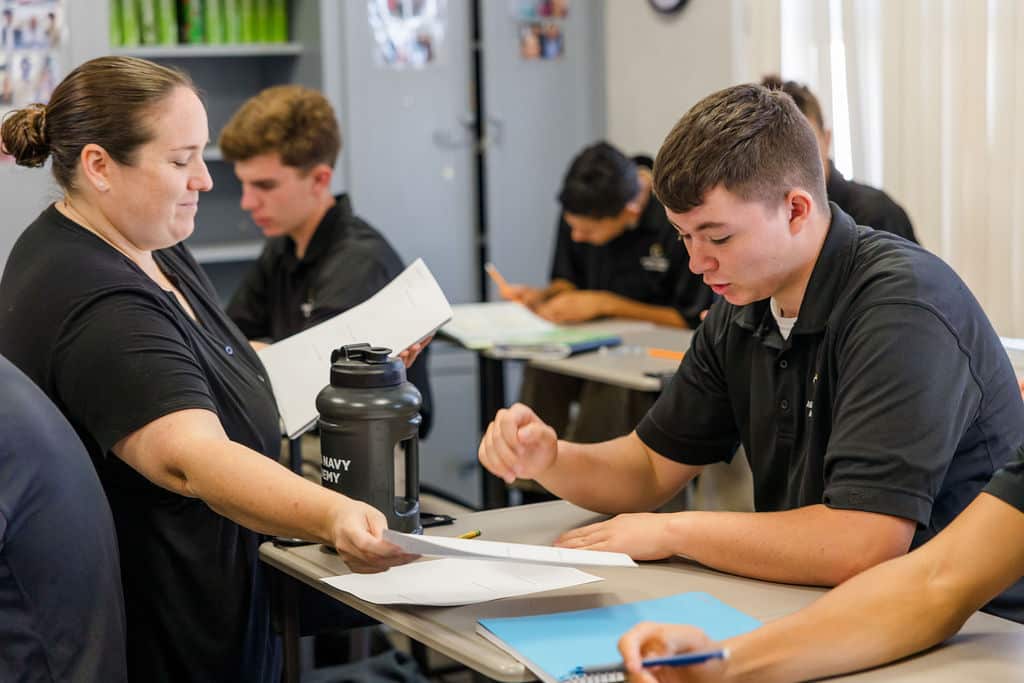
“Spoon feeding in the long run teaches us nothing but the shape of the spoon.” – E.M. Forster, British author and essayist.
We pay a lot of attention these days to curriculum content, classroom teaching strategies, and other teaching-directed resources as the primary strategies that comprise a quality education. So much so that we tend to forget the other important component necessary in a young person’s education.
Learning typically is secondary to teaching in the “teaching and learning” paradigm; but by no means is it any less important in how people – young and old – are educated. Quite the contrary, actually. While both processes are critical to a quality education, there are some who argue that learning is at least equally – if not more important — to the educational process, citing the credo: “The objective of education is learning, not teaching.”
In their 2008 book, “Turning Learning Right Side Up: Putting Education Back on the Right Track,” authors Russell L. Ackoff and Daniel Greenberg wrote…
“Traditional education focuses on teaching, not learning. It incorrectly assumes that for every ounce of teaching there is an ounce of learning by those who are taught. However, most of what we learn before, during, and after attending schools is learned without its being taught to us…”
“Ancora imparo.” Italian phrase for, “I am still learning.” – Michelangelo at age 87
A few reasons why learning is as important as teaching, if not more so
A review of articles and blogs on the relationship between teaching and learning uncovers the following generally accepted reasons why it’s important to emphasize learning more in the teaching and learning paradigm:
- Teaching is not a goal in itself. One does not teach for the sake of teaching a great lesson. The sole purpose of teaching is to bring about learning and one can go as far as to say that teaching that does not increase learning or monitor learning is a waste of time.
- Learners can learn without teachers, but teachers can’t teach without learners.
- Teachers do not control the entire learning process. There are many factors that determine whether students learn various subjects, such as their future goals, parental or peer influences and how they regard the teachers.
- Students must want to learn. They must be motivated. Teachers cannot teach those who are unwilling to learn. Optimizing the learning environment – not the topic itself – can help turn a disinterested student into an eager learner.
- The ultimate goal of teaching is to equip learners to teach themselves in order to become life-long learners.
- The best teachers themselves remain perpetual learners by updating their knowledge and teaching skills on a continuing basis.
- Teaching methodologies must be varied in order to accommodate different learning styles. There is no “one size fits all” teaching method. Who the student is dictates the appropriate teaching methods.
“Tell me and I forget; teach me and I may remember; involve me and I learn.” – Benjamin Franklin
Speaking of “no one size fits all,” boys and girls learn differently
Nowhere is the need to pay attention to improving the quality of learning more evident than the need to consider the learner’s gender. Boys and girls learn differently, according to recent studies of the human brain by the Gurian Institute, a Spokane, Wash.-based institute that trains educators, counselors, parents and others on teaching practices that optimize learning for each gender. The institute provides training and other resources to a network of Gurian Model Schools that includes the Army and Navy Academy, an all-boys college preparatory school for 7th through 12th grades in Carlsbad, Calif.
In recent years, the Academy has put into effect teaching methods and learning environments that respond to the following Gurian findings:
- The cerebral cortex of a boy’s brain that houses memory, attentiveness, language, and other attributes that impact learning is mostly dedicated to spatial functioning as opposed to a girl’s brain that is typically focused on verbal skills.
- Boys need to move around to say alert and focused. They prefer being on their feet during class and other learning functions
- Boys tend to thrive more on competition than girls who prefer collaboration.
- Boys tend to require more and varying visual stimulants to keep them attentive than do girls
- Boys need more physical activity to stimulate their brain and alleviate impulsive behaviors
- Boys respond well to structured programs and activities, such as the Army and Navy
Academy’s JROTC leadership and character development program; and taking part in the Academy’s student government, 12 competitive sports, clubs, drama, marching band, and community service projects. They also respond positively to hands-on elective classes in which they learn computer coding as well as the new STEM-based Warrior Aviation Course that prepares 9th– through 12th-grade cadets to earn a private pilot license and/or pursue aviation courses later at the college or university level.
How to enhance learning environments for boys
Australian clinical psychologist Andrew Fuller’s “Brain-Based Learning Manual” includes several effective methods for optimizing learning for boys that go beyond lesson plans, including the following suggestions:
- Demonstrate respect. Boys are constantly checking out teachers to see if they respect them. They respond well to teachers and others who have expectations of them and respect as being capable of meeting those goals.
- Have clear signals as to who is in charge. Boys especially need boundaries. They respond to teachers who are fair, even funny and who respect their point of view. The Army and Navy Academy’s military emphasis embeds structure and respect into its throughout its academic, JROTC and character development programs.
- Control where students sit if necessary. Move boys who appear not to be paying attention to the front of the classroom to help optimize an effective learning environment for them.
- Boys need quiet time. To reflect and re-energize, boys need quiet times to think, read, and chat with others. School sites need to provide quiet or “time out” spots.
- Use non-verbal physical signal(s) for silence. Boys re particularly adept at screening out white noise which includes teachers verbally requesting and even yelling for silence. Teachers should train their class to observe visual cues, such as a raising a hand, turning the lights on or off or moving to a pre-designated spot in the room. Never, ever yell.
- Value them and they will be heroes. Boys are tuned into hierarchies. Pre-determined values of a classroom will play a powerful role in guiding their actions.
- Have as few rules and words as possible. Fuller suggests a teacher should have no more than three clear rules of conduct that are applied fairly and consistently. Managing an optimum classroom environment for learning should be based on the simple promise, “I won’t let this happen to you and I won’t let you do it to anyone else.”
“Classrooms … are increasingly becoming environments that favor the girls’ brain.” – Michael Gurian
Despite the emphases on content and teaching practices, learning on the part of boys has suffered in the past few years; due in large to the fact that learning environments of co-educational schools tend to favor girls, according to the Gurian Institute findings. When measurements of accomplishment and punishment for boys and girls of equal intelligence are put next to each other, boys consistently score lower, achieve less, and are disciplined more.
Optimizing our children’s education won’t be achieved by focusing solely on curriculum and teaching practices. Authors Ackoff and Greenberg suggest learning is the key factor in a quality education when posing the question: “Why doesn’t education focus on what humans can do better than the machines and instruments they create?”
